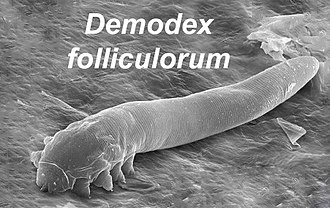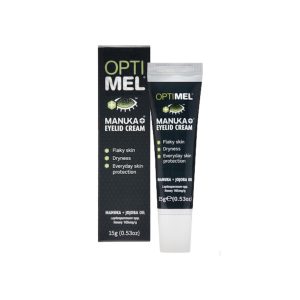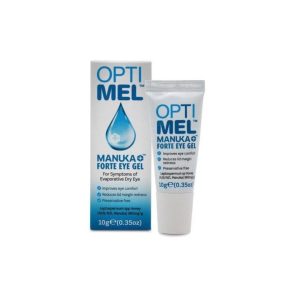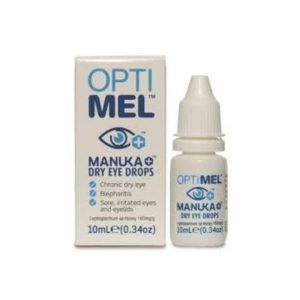Are you suffering from persistent dryness, irritation, or discomfort in your eyes that seems to linger indefinitely? If so, you might be among the many individuals facing a chronic dry eye condition potentially linked to Demodex mites. These minuscule, eight-legged organisms naturally inhabit the human skin biome, especially around the delicate areas of the eyes and eyelids. However, when their populations surge, they can trigger inflammation, exacerbating the symptoms associated with dry eye syndrome, leading to significant discomfort and distress for those affected.
If you've been struggling with ongoing, unexplained dry eye problems, it's essential to investigate whether Demodex mites might play a crucial role in your symptoms. This comprehensive guide will assist you in identifying the signs of a Demodex infestation, unraveling the intricate relationship between these mites and dry eye disease, and presenting effective treatment options designed to manage their population and effectively alleviate your discomfort.

Identify and Understand the Symptoms of Demodex Blepharitis
Individuals suffering from Demodex Blepharitis, resulting from a significant infestation of these mites, often report experiencing a variety of distinctive symptoms. Common manifestations include:
- Burning, stinging, or gritty sensations in the eyes, particularly noticeable at the end of a long day.
- Unexplained excessive tearing or watery eyes that do not stem from allergies.
- Red, inflamed eyelids, accompanied by irritation of the skin surrounding the eyes.
- Crusty, dandruff-like buildup along the lashes and lid margins, often appearing as collarettes.
- Extreme sensitivity to light, resulting in a persistent feeling of squinting.
- Intermittent episodes of blurred vision that vary throughout the day.
Many individuals endure these dry eye symptoms for years, often without realizing that an infestation of Demodex mites could be a significant underlying cause. Recognizing these symptoms is a critical step in effectively addressing the root issue and pursuing the appropriate treatment to restore comfort.

Understanding the Mechanism: How Demodex Mites Cause Dry Eye Symptoms
Are you wondering how these minute creatures can trigger such distressing dry eye symptoms? Demodex mites thrive on the oils and cellular debris found on the skin, particularly in the hair follicles of your eyelashes. As these mites feed, they excrete waste products, lay eggs, and shed remnants of deceased mites, which accumulate along the eyelid margins. This buildup creates a substantial layer of debris and a bacterial biofilm that can obstruct the delicate oil glands vital for maintaining optimal eye health.
When these oil glands fail to produce and release sufficient oils, it leads to the rapid formation of dry patches on the eye surface. This oily tear film is essential for preventing the quick evaporation of the watery tears that keep our eyes moist and comfortable. The inflammation caused by the blockage can aggravate eye irritation, redness, and the uncomfortable gritty sensation commonly associated with dry eye conditions, creating a cycle of discomfort that can be hard to escape.
Unlocking Effective Treatment: Mastering the Life Cycle of Demodex Mites
Gaining a clear understanding of the life cycle of Demodex mites is crucial for implementing effective treatment strategies. These mites progress through distinct stages: egg, larva, nymph, and adult, over a life cycle that lasts approximately 14 to 21 days. They are most active during the night, emerging from their hair follicles to mate and deposit new eggs on the skin's surface.
This nocturnal behavior indicates that the best time to administer Demodex treatments is during the evening, just before bedtime. By targeting the mites when they are most active, you can significantly enhance the efficacy of your treatment. However, due to their rapid reproductive capabilities, any surviving mites can quickly repopulate, making ongoing treatment essential over several weeks or even months in order to achieve lasting results and symptom relief.
Implementing Effective Strategies for Managing Demodex-Related Dry Eye Symptoms
If your optometrist confirms a high count of Demodex mites through eyelash sampling or microscopic examination, they may recommend a variety of treatment options to combat the infestation and alleviate your symptoms:
1. Leverage the Power of Tea Tree Oil Eyelid Wipes and Scrubs for Effective Relief
Products infused with tea tree oil are renowned for their powerful antimicrobial and antiparasitic properties, making them exceptionally effective in eradicating mites. These formulations can efficiently remove surface mites, dissolve collarettes produced by these pests, and help extract buried mites, rendering them more susceptible to targeted treatment.
While tea tree oil is effective against mites, it may cause stinging upon application and can be cytotoxic to healthy cells, potentially aggravating symptoms for some users. Regular use of tea tree oil eyelid wipes or scrubs before bedtime can gradually diminish the mite population. A notable example of a potent tea tree oil treatment is OcuSoft Oust Foam, which has proven particularly effective for managing blepharitis primarily caused by Demodex mites.
2. Utilizing Gentle Hypochlorous Acid Lid Hygiene Sprays for Safe Eye Care
Hypochlorous acid is a natural substance produced by our immune system, functioning as an effective antimicrobial agent. It is gentle on the eyes, does not cause stinging, and is safe for our cells.
Disinfecting lid sprays and cleansing foams that incorporate hypochlorous acid not only eliminate mites but also help reduce inflammation and provide symptomatic relief. Applying these solutions to the lash lines before bed can effectively eradicate mites and their debris. Many of these products have a distinct odor reminiscent of chlorinated pool water. Popular hypochlorous acid-based solutions include Ocusoft Hypochlor Spray and Avenova.
Among these options, Ocusoft Hypochlor Foam is frequently recommended due to its superior value and extended shelf life after opening, making it a practical choice for ongoing management and treatment of Demodex-related symptoms.
3. Discovering the Benefits of Manuka Honey Solutions for Eye Care
Recent studies suggest that Manuka Honey solutions may be as effective as 50% tea tree oil against Demodex, although further research is necessary to fully validate this claim. While it may cause a slight sting upon application, Manuka Honey is generally less irritating than tea tree oil and demonstrates excellent efficacy against various forms of blepharitis. It is non-cytotoxic and less likely to provoke inflammation in the eyelids.
Many patients report that any initial sting is well worth it, as they often experience significant relief afterward. Manuka Honey solutions are available in gel form (like Optimel Forte, which is more effective but may sting more) and as drops (such as Optimel Drops, which are easier to apply and sting less), catering to different user preferences.
4. Addressing Severe Demodex Infestations with Oral Anti-Parasitics
In situations where Demodex overpopulation is particularly severe and persistent, healthcare professionals may prescribe oral antiparasitic medications. For instance, formulations such as Ivermectin in pill form have shown effectiveness in managing these infestations. Furthermore, weekly doses of oral tea tree oil supplements taken over several months can help regulate mite levels, providing longer-lasting relief from the distressing symptoms associated with this condition.
5. Exploring Advanced Professional Treatments for Comprehensive Demodex Management
Certain eye clinics offer intensive in-office treatments specifically designed for Demodex management, utilizing specialized products such as Oust Demodex Cleanser Swabstix or a handheld electric device known as BlephEx.
The Oust Demodex Cleanser Swabstix provides targeted treatment options that can significantly aid in diminishing the impact of these bothersome mites, allowing you to regain comfort and enhance overall eye health.
The Article: Demodex Mites Linked to Chronic Dry Eye Issues first appeared on https://writebuff.com.
The Article Demodex Mites and Their Connection to Chronic Dry Eye Was Found On https://limitsofstrategy.com
The Article Demodex Mites: Link to Chronic Dry Eye Explained First Appeared ON
: https://ad4sc.com



Comments are closed